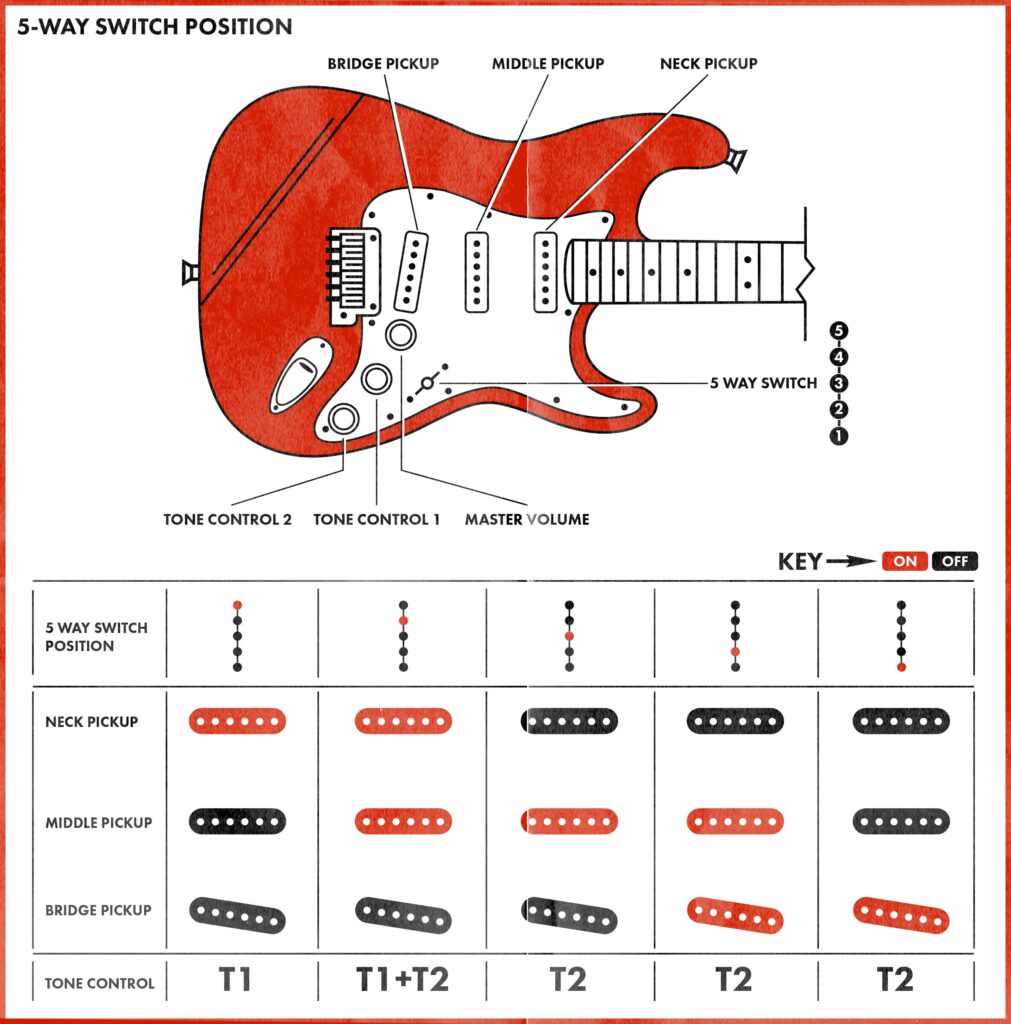Do you love shredding on your electric guitar but find yourself constantly battling with scratchy pots and lackluster pickups? Fear not, fellow rockers, for we have the ultimate guide to essential electric guitar maintenance that will have your instrument sounding and playing like a dream. From banishing those pesky potentiometers to reviving your pickups, we’ve got all the tips and tricks you need to keep your guitar in tip-top shape. So grab your soldering iron and get ready to rock, because we’re diving into the world of pots, pickups, and more in this electrifying guide to guitar maintenance.
Contents
- 1 Understanding Guitar Electronics and Their Impact on Tone
- 2 The Role of Potentiometers in Guitar Sound Shaping
- 3 Selecting the Right Pickups for Your Electric Guitar’s Tone
- 4 Cleaning and Maintenance Tips for Guitar Electronics
- 5 Troubleshooting Common Electric Guitar Electronics Issues
- 6 Shielding Techniques to Reduce Noise in Your Guitar Signal
- 7 Upgrading Your Guitar’s Electronics for Enhanced Performance
- 8 FAQs
- 9 Rock on, Guitar Enthusiasts!
Understanding Guitar Electronics and Their Impact on Tone
So you think you know everything about playing the guitar? Well, think again! Understanding guitar electronics is like unlocking a secret code to achieving the perfect tone. It’s not just about strumming those strings, it’s about harnessing the power of electronics to take your sound to a whole new level.
Did you know that the type of pickups in your guitar can drastically affect the tone? Single-coil pickups give you that bright, crisp sound perfect for clean tones, while humbuckers provide a fat, thick tone that’s ideal for rock and metal. Experimenting with different pickup configurations can open up a whole new world of sonic possibilities.
But wait, there’s more! The tone controls on your guitar aren’t just there for show. Tweaking the volume and tone knobs can help you fine-tune your sound to perfection. Don’t be afraid to play around with them to see how they impact your tone. And let’s not forget about the magical world of effects pedals – wah-wah, distortion, chorus, the list goes on. These little boxes of wonder can take your sound from ordinary to extraordinary in a snap.

The Role of Potentiometers in Guitar Sound Shaping
Potentiometers may sound like something out of a Harry Potter potions class, but in reality, they play a crucial role in shaping the sound of your guitar. These little knobs are essentially volume and tone controls that help you dial in the perfect sound for your shredding or strumming needs.
When you twist those pots, you’re essentially adjusting the resistance in the electrical circuit of your guitar. This means you can control the volume of your guitar signal, as well as shape the EQ by adjusting the tone knob. It’s like having a mini sound wizard at your fingertips!
Not all potentiometers are created equal, however. Some are linear, which means the resistance changes evenly as you turn the knob. Others are audio taper, where the resistance changes logarithmically to give you more precise control over the volume and tone. It’s like having a fine-tuned dial for your sonic sorcery.
So next time you’re jamming out on your guitar, take a moment to appreciate the humble potentiometer. Without these little guys, your sound would be as bland as a peanut butter and jelly sandwich without the jelly. Embrace the power of the potentiometer and unleash your inner guitar god!
 Pickups for Your Electric Guitar’s Tone”>
Pickups for Your Electric Guitar’s Tone”>
Selecting the Right Pickups for Your Electric Guitar’s Tone
So you’ve decided to take the plunge and upgrade the pickups on your electric guitar. But where do you start? With so many options out there, finding the right pickups for your desired tone can be a daunting task. Don’t worry, I’m here to help you navigate the murky waters of pickup selection with a few helpful tips.
First things first, consider the genre of music you primarily play. Different styles require different tones, so it’s important to choose pickups that complement your musical style. Whether you’re a blues player looking for that warm, vintage sound or a metalhead in need of high-output pickups for those face-melting solos, there’s a pickup out there for you.
Next, think about the type of magnets you want in your pickups. Alnico magnets are known for their warm, smooth tone, while ceramic magnets offer a more aggressive, punchy sound. Experiment with different magnet types to find the right balance of warmth and bite for your playing style.
Lastly, don’t forget to consider the output of your pickups. Higher output pickups will drive your amp harder, leading to a more aggressive tone, while lower output pickups will provide a more dynamic, responsive sound. It’s all about finding that sweet spot that complements your playing style and helps you achieve the tone of your dreams.
 Maintenance Tips for Guitar Electronics”>
Maintenance Tips for Guitar Electronics”>
Cleaning and Maintenance Tips for Guitar Electronics
So you’ve finally mastered that sick guitar solo, but have you mastered keeping your guitar electronics clean and maintained? If not, fear not! We’ve got some tips to keep those sweet sounds coming from your instrument.
First things first, make sure to regularly dust off your guitar’s electronics with a clean, dry cloth. Dust can build up over time and clog up your pickups and switches, leading to a decrease in sound quality. Plus, who wants a dusty guitar? Gross.
Next, if you notice any scratchy noises or inconsistent sound coming from your guitar, it might be time to clean those knobs and switches. A simple solution of warm water and mild soap will do the trick. Just make sure to dry them thoroughly before putting everything back together. Nobody wants a soggy switch ruining their rockstar moment.
Lastly, don’t forget about the input jack! It’s easy to overlook, but a dirty input jack can lead to poor connection and unwanted noise. Use a cotton swab with some rubbing alcohol to clean it out, and your guitar will thank you with crystal-clear tones. Plus, it’s always satisfying to see the gunk you’ve cleaned out – it’s like a mini guitar surgery!

Troubleshooting Common Electric Guitar Electronics Issues
So your electric guitar is acting up, huh? Don’t fret (pun intended), because we’ve got some tips to help you troubleshoot those pesky electronics issues!
First things first, make sure all your connections are secure. Check that your cables are plugged in properly and that there are no loose connections. If everything looks good, it’s time to move on to the next step.
Next, inspect your pickups. Are they dirty or dusty? A quick cleaning might be all they need to get back in tune. If that doesn’t do the trick, it might be time to consider replacing them.
Lastly, don’t forget to check your volume and tone knobs. Sometimes they can get stuck or become unresponsive. Give them a good twist and see if that solves the issue. If not, it might be time to call in the pros.
Shielding Techniques to Reduce Noise in Your Guitar Signal
When it comes to reducing noise in your guitar signal, shielding techniques can be your best friend. By taking the time to properly shield your guitar, you can minimize interference and make your tone shine brighter than a disco ball at a 70s prom.
One popular shielding technique is using copper tape to line the cavities of your guitar. This can help block out unwanted noise and ensure that your guitar sings like a choir of angels. Plus, you’ll feel like a DIY rockstar as you meticulously apply the tape, *channeling your inner Bob Vila*.
Another trick is to shield the pickguard of your guitar with conductive paint. Not only will this help reduce noise, but it’ll also give your pickguard a slick new look. You’ll feel like Picasso as you brush on the paint, turning your guitar into a work of art.
Don’t forget to shield the back of your guitar’s control cavity as well. This can make a big difference in reducing noise and ensuring that your signal stays crystal clear. With all these shielding techniques in your toolbox, you’ll be able to rock out without any unwanted interference. So shield up, rock on, and keep the noise at bay!
Upgrading Your Guitar’s Electronics for Enhanced Performance
So you’ve got yourself a fancy guitar, but you feel like it’s missing a little something. Fear not, my fellow musician! It’s time to upgrade your guitar’s electronics for enhanced performance and take your playing to the next level.
First things first, let’s talk about swapping out those old pickups for some shiny new ones. Pickups are like the eyes and ears of your guitar, so make sure you choose ones that will really make your guitar sing. Whether you prefer single-coils or humbuckers, there are plenty of options out there to suit your playing style.
Next up, let’s give your tone control a makeover. Upgrading your potentiometers and capacitors can make a world of difference in shaping your sound. A smoother tone knob means smoother transitions between clean and dirty tones, while a higher quality capacitor can add clarity and depth to your sound.
Don’t forget about your switches and jacks! A sturdy switch can prevent those annoying crackling noises, while a high-quality jack can ensure your signal stays strong and clear. Plus, upgrading to a locking jack can save you from those embarrassing unplugged moments on stage.
FAQs
What are pots and why are they important for electric guitar maintenance?
Pots, short for potentiometers, are the volume and tone knobs on your electric guitar. They control the amount of signal sent from your pickups to your amp. Proper maintenance of pots can ensure smooth operation and prevent scratchy sound.
How can I clean my guitar pickups?
To clean your guitar pickups, gently remove any dirt or grime with a soft, dry cloth. Avoid using any harsh chemicals or abrasive materials that could damage the delicate coils inside the pickups. A clean pickup leads to better sound quality!
Why is it important to regularly check and tighten the screws on my electric guitar?
Loose screws can lead to unwanted rattling or buzzing noises while playing. Regularly checking and tightening the screws on your electric guitar can help keep everything in place and prevent any disruptions to your rocking out sessions.
How often should I change my guitar strings for optimal performance?
Changing your guitar strings regularly, typically every 3-6 months depending on how often you play, is essential for maintaining good tone and playability. Old, worn-out strings can sound dull and hinder your performance. Keep it fresh!
What are some tips for storing my electric guitar to prevent damage?
Store your electric guitar in a climate-controlled environment to avoid extreme temperatures and humidity levels. Keep it in a sturdy case or stand to prevent accidental damage. And don’t forget to loosen the strings a bit when not in use to relieve tension on the neck. Your guitar will thank you!
Rock on, Guitar Enthusiasts!
Congratulations on making it through our crash course on essential electric guitar maintenance! Remember, a well-maintained guitar is a happy guitar, so don’t skimp on the TLC for your precious instrument. Whether you’re a seasoned pro or a newbie strummer, taking care of your pots, pickups, and more will ensure that your guitar continues to rock out for years to come. So grab your tools, crank up the amp, and keep shredding those riffs like a true rockstar!



